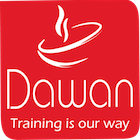Goals
- Prepare to pass the ITIL Service Strategy (SS) certification exam
- Analyze the principles, techniques and relationships to create an SS
- Identify the purpose, scope and objectives of each SS process
- Assess governance IT to strategize and leverage governance frameworks and organizations
Program
Purpose and objectives
Link the transition of services to the other stages of the ITIL life cycle
Transition of services and creation of value for the businesses
Principles of the transition of services: the concept of service and the role of utilities and guarantees
Establish a formal policy and a common structure for the implementation of all required changes
Support knowledge transfer, decision support and reuse of processes, systems and other elements
Anticipate and manage changes in leadership
Transition specifications of services throughout the lifecycle
Optimize the performance of the service transition and the typical metric that can be used
Change
management – Controlled change management with minimal disruption
– Standardized methods for rapid and efficient change management
– Business risk optimization
Asset management and service configuration
– Identify control and count assets and CIs
– Record changes in the configuration management system
Knowledge management
– Facilitate informed decision making with a service knowledge management system (SKMS)
– The Data-Information-Knowledge-Wisdom structure
Release and Deployment Management
– Assemble and position all aspects of production services
– Establish efficient use of new or changed services
– Optimize speed, risk, cost for change delivery
– Others considerations
– Planning and transition support
– Validation and testing of services: the V-model of services
– Evaluate performance against expectations
Contribution to service transition activities: nature, purpose and value
Communication and engagement management, organizational and stakeholder changes
The role and requirements of service transition in other ITIL processes Organize service transition
Roles and responsibilities
Apply the transition of services in various circumstances
Identify the organizational context
Define tool and technology
requirements Analyze technology requirements for service transition elements
Support service transition through technology
Integrate service transition into full life cycle
Bring technology and organizational situation closer
Implement service transition in a virtual or cloud environment
Service transition challenges
Identify Key Success Factors (CSFs) and risks that affect the viability of new or changed services
Define CSFs and Key Performance Indicators ( KPI)
Evaluate the benefits and risks for new or changed services
Incorporate external factors into the analysis
Preparation and passage of certification
Duration
3 days
Price
£ 1908
Audience
IT directors, managers, system administrators, developers, all those concerned by IS
Prerequisites
Have taken the ITIL Foundation course or equivalent concepts
Reference
GES101211-F
Sessions
Contact us for more informations about session date
